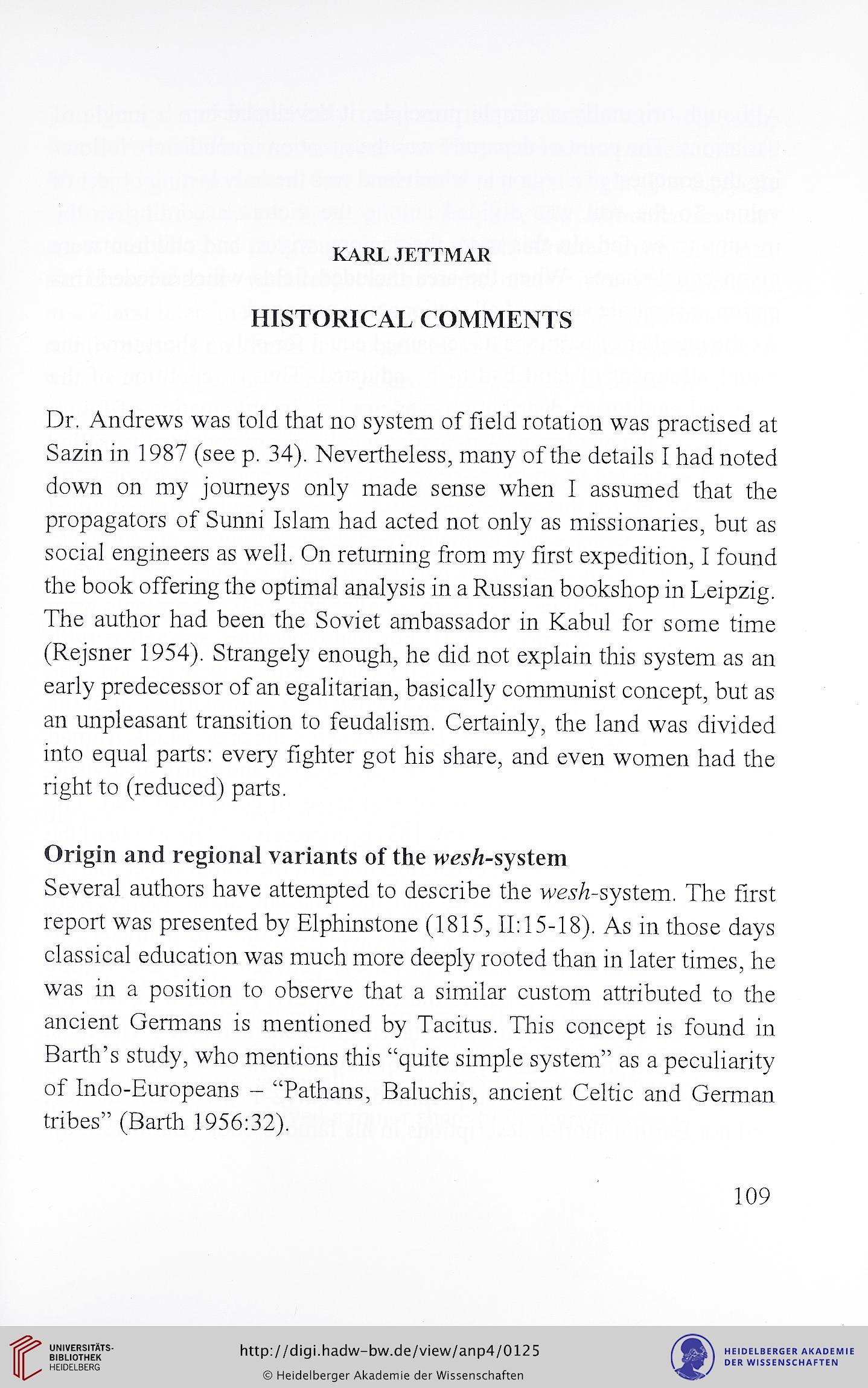KARL JETTMAR
HISTORICAL COMMENTS
Dr. Andrews was told that no system of field rotation was practised at
Sazin in 1987 (see p. 34). Nevertheless, many of the details I had noted
down on my journeys only made sense when I assumed that the
propagators of Sunni Islam had acted not only as missionaries, but as
social engineers as well. On returning from my first expedition, I found
the book offering the optimal analysis in a Russian bookshop in Leipzig.
The author had been the Soviet ambassador in Kabul for some time
(Rejsner 1954). Strangely enough, he did not explain this system as an
early predecessor of an egalitarian, basically communist concept, but as
an unpleasant transition to feudalism. Certainly, the land was divided
into equal parts: every fighter got his share, and even women had the
right to (reduced) parts.
Origin and regional variants of the rr^A-system
Several authors have attempted to describe the wc^A-system. The first
report was presented by Elphinstone (1815,11:15-18). As in those days
classical education was much more deeply rooted than in later times, he
was m a position to observe that a similar custom attributed to the
ancient Germans is mentioned by Tacitus. This concept is found in
Barth's study, who mentions this "quite simple system" as a peculiarity
of Indo-Europeans - "Pathans, Baluchis, ancient Celtic and German
tribes" (Barth 1956:32).
109
HISTORICAL COMMENTS
Dr. Andrews was told that no system of field rotation was practised at
Sazin in 1987 (see p. 34). Nevertheless, many of the details I had noted
down on my journeys only made sense when I assumed that the
propagators of Sunni Islam had acted not only as missionaries, but as
social engineers as well. On returning from my first expedition, I found
the book offering the optimal analysis in a Russian bookshop in Leipzig.
The author had been the Soviet ambassador in Kabul for some time
(Rejsner 1954). Strangely enough, he did not explain this system as an
early predecessor of an egalitarian, basically communist concept, but as
an unpleasant transition to feudalism. Certainly, the land was divided
into equal parts: every fighter got his share, and even women had the
right to (reduced) parts.
Origin and regional variants of the rr^A-system
Several authors have attempted to describe the wc^A-system. The first
report was presented by Elphinstone (1815,11:15-18). As in those days
classical education was much more deeply rooted than in later times, he
was m a position to observe that a similar custom attributed to the
ancient Germans is mentioned by Tacitus. This concept is found in
Barth's study, who mentions this "quite simple system" as a peculiarity
of Indo-Europeans - "Pathans, Baluchis, ancient Celtic and German
tribes" (Barth 1956:32).
109




